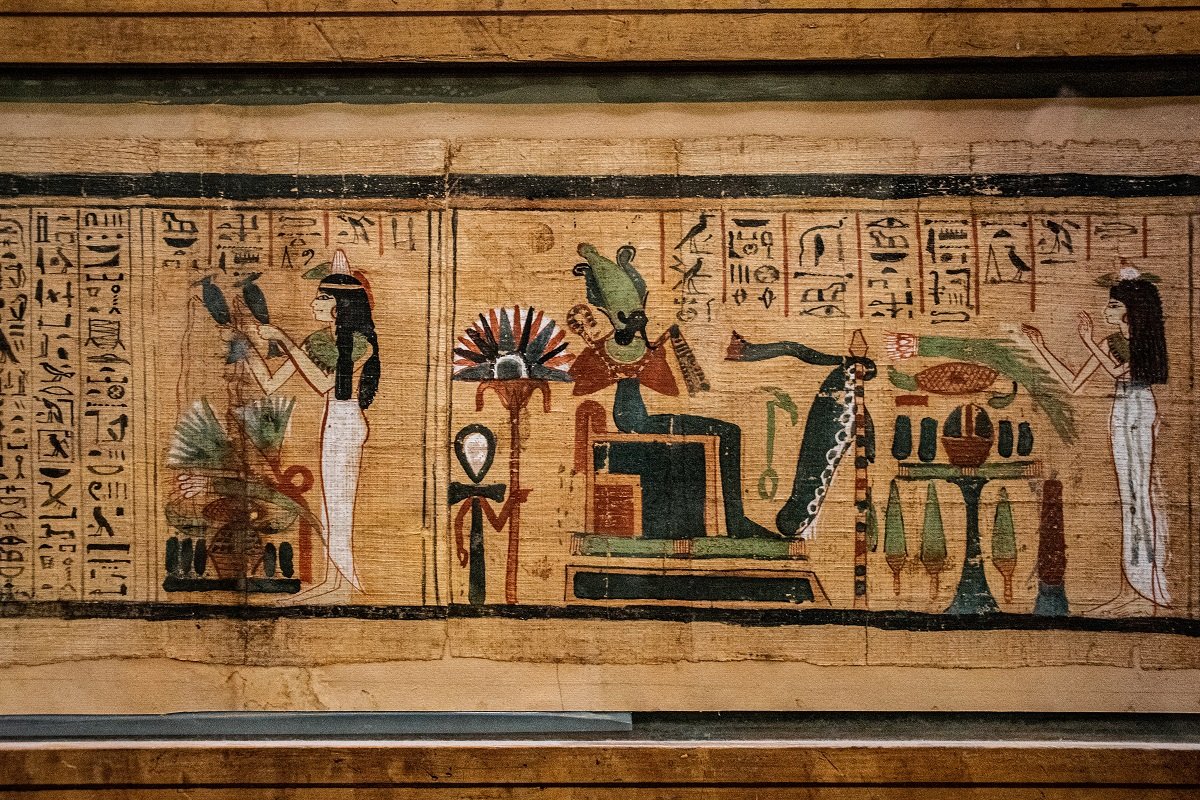We often wonder; how did the ancient people communicate? What language did they use? Was it as easy as we think we find English, or our mother tongue and the various languages in the world?
The first ever way in which humans communicated with each other, or expressed their feelings was through paintings and rock art. We can consider this as a form of language. A single chance changed the position of the humans in the great cycle of life. They grew to be the dominant species on earth. The reason: a single mutation enabling cognitive abilities. A language. A single force that broke all the barriers between humans and knowledge. It helped them procrastinate, imagine and develop.
Civilizations thrived with the help of this communicating tool. One of the most important of them was the Egyptian civilization and the hieroglyphs as a language.
Hieroglyphs was a writing system, which first originated in ancient Egypt. The word literally means “sacred carvings”. They contain characters in the form of pictures. It was originally known as “Medu-nejer” that is “god’s-word or divine speech”. The first hieroglyphic inscriptions occurred between 3200 BCE – 3300 BCE at Abydos located in Upper Egypt, west of the Nile River, in a cemetery. The Egyptian hieroglyphs have been divided into many stages according to the time period. We had the old Egyptian {during the old kingdom}, the middle Egyptian {during the middle kingdom} and the late Egyptian {during the new kingdom}. These hieroglyphs had two more additions of Demotic {Late period, 600 BCE} and Coptic {mostly Greek letters}. Many hieroglyphs have been found either carved on stones which became part of temples, royal palaces, tombs of kings and commoners etc. or on papyrus or wood for religious literature.
The basic writing system of ancient Egyptians consisted of about five hundred common signs. Each hieroglyph is basically a picture of a thing(!) that exists in the world or in the imagination of the ancient Egyptians. There are two basic elements in the Egyptian hieroglyphs. They are:
1. Ideograms or sense signs: They were basically characters symbolizing the idea of a thing without using sounds. Each hieroglyph could also be used independently, as a picture. When used in this sense, hieroglyphs are referred to as ideograms. For eg:
 {b} and
{b} and  {w} In this example, the icon of a the leg represents the consonant b and that of the bird represents w.
{w} In this example, the icon of a the leg represents the consonant b and that of the bird represents w.
2. Sound signs or phonograms: They were hieroglyphs used to represent a sound. Using phonograms, scribes would spell out words which were not represented by their own ideogram. The two hieroglyphs taken together, have a whole new meaning.
 {b} and
{b} and  {w} used instead as phonograms, sound as “bew” which in middle Egyptian means “place”.
{w} used instead as phonograms, sound as “bew” which in middle Egyptian means “place”.
We take the example of a cat. It is written as: c+ a+ t+ {A picture of cat}
The picture of a cat at the end is important to determine the meaning of the word.
So, in this example {c + a+ t} are the phonograms and the image of the cat is the ideogram. The image in the end is important because, if we add any other image to the same cat spelling, it will mean something else.
For eg: for the same spelling of c+a+t if we add a picture of toothbrush  the meaning of that word becomes toothbrush, no matter what the alphabets have been used.
the meaning of that word becomes toothbrush, no matter what the alphabets have been used.
Hence, Ideograms are important in Egyptian hieroglyphs.
3. Determinants: They help to clarify the meaning of the word, and come after the phonograms.
For eg:
 We take into consideration this icon to be a hieroglyph. In determinants, the meaning of this hieroglyph is pyramid, because the icon is a pyramid. The picture of a cat in the above example also represents determinants.
We take into consideration this icon to be a hieroglyph. In determinants, the meaning of this hieroglyph is pyramid, because the icon is a pyramid. The picture of a cat in the above example also represents determinants.
Phonograms or sound signs are divided into three parts:
1. Unilateral i.e., one consonant sign which can also be identifies as “alphabets”.
For eg:
 In Egyptian hieroglyphs, the icon of an owl has the consonant “m”.
In Egyptian hieroglyphs, the icon of an owl has the consonant “m”.
2. Bilateral i.e., two consonant signs. For eg:
 This icon of a plant has the meaning of 2 consonant signs, which are “S and W”. They are pronounced as “su”.
This icon of a plant has the meaning of 2 consonant signs, which are “S and W”. They are pronounced as “su”.
3. Trilaterals {three consonant signs} i.e., one hieroglyph= three alphabets
For eg:
 This is the sign of kheper beetle. The consonants associated with this sign are “hpr”.
This is the sign of kheper beetle. The consonants associated with this sign are “hpr”.
As we move towards grammar, it is very peculiar in Egyptian hieroglyphic tongue that the verb comes before the subject. Hence, the sentence structure goes as: – verb+ subject+ object.
The direction of writing these becomes as interesting as the language itself is. Hieroglyphs go in three directions:
- Left to right
- Right to left
- Up to down
The art of writing the Egyptian hieroglyphs, died away with the end of the civilization. Being a little hard to decipher, it regained its fame, thanks to Napolean Bonaparte’s famous voyage to a place called Rosetta {now Rasheed} east of Alexandria in Egypt.

It is interesting to know that Napolean was a big enthusiast of Egypt and its vast history. He funded many expeditions to unearth the various treasures and knowledge buried deep inside the tombs and pyramids of this civilization. Due to his Egyptian expeditionary force, the lost and dead Egyptian hieroglyphs caught the attention of the scientific society.
Then came a breakthrough in the history of Egyptology, when Jean François Champollion deciphered the Rosetta stone. The Rossetta stone is a stele inscribed with three versions of a decree issued in Memphis, south of the Nile River delta, 24kms from modern Cairo. It was discovered by Pierre-François Boucharde in 1799. It has been preserved in the British museum since 1802. Being the chief instrument of communication, the Egyptian language played an important role in the development of the complex Egyptian society and economy. The people with the help of this language kept records of everything; from royal decrees to law and order to religious chants and keeping of the treasury to finally the last words on their tombs. As is the rule of all great civilizations which thrived, language was an important tool for kings to rule over their subjects, and for the subjects to pray to their gods.
A little prayer to all the Egyptian gods from our side.
“Dear Horus, please give me the courage and strength to face eternity, Dear Amun, please protect my soul and guide it to the distant afterlife, Dear Hapi, please bless me with prosperity, Dear Thoth, bless me with the art of reading and writing And finally, Dear Osiris please bless me with a wonderful life”
PS: The icons used in the article are not real hieroglyphic signs or symbols. They have been used as a reference to explain the writing system and method of the Egyptian hieroglyphs.











